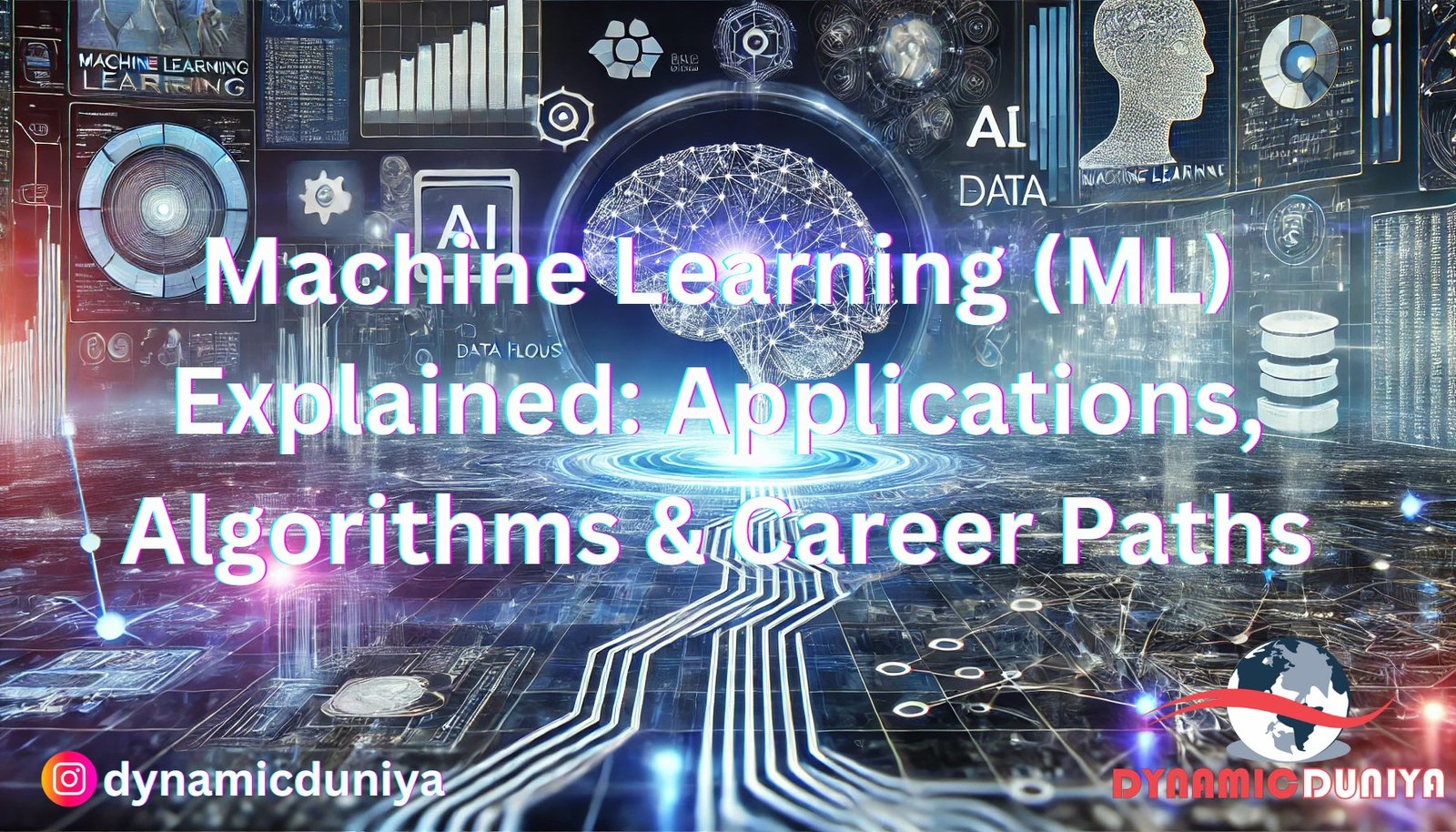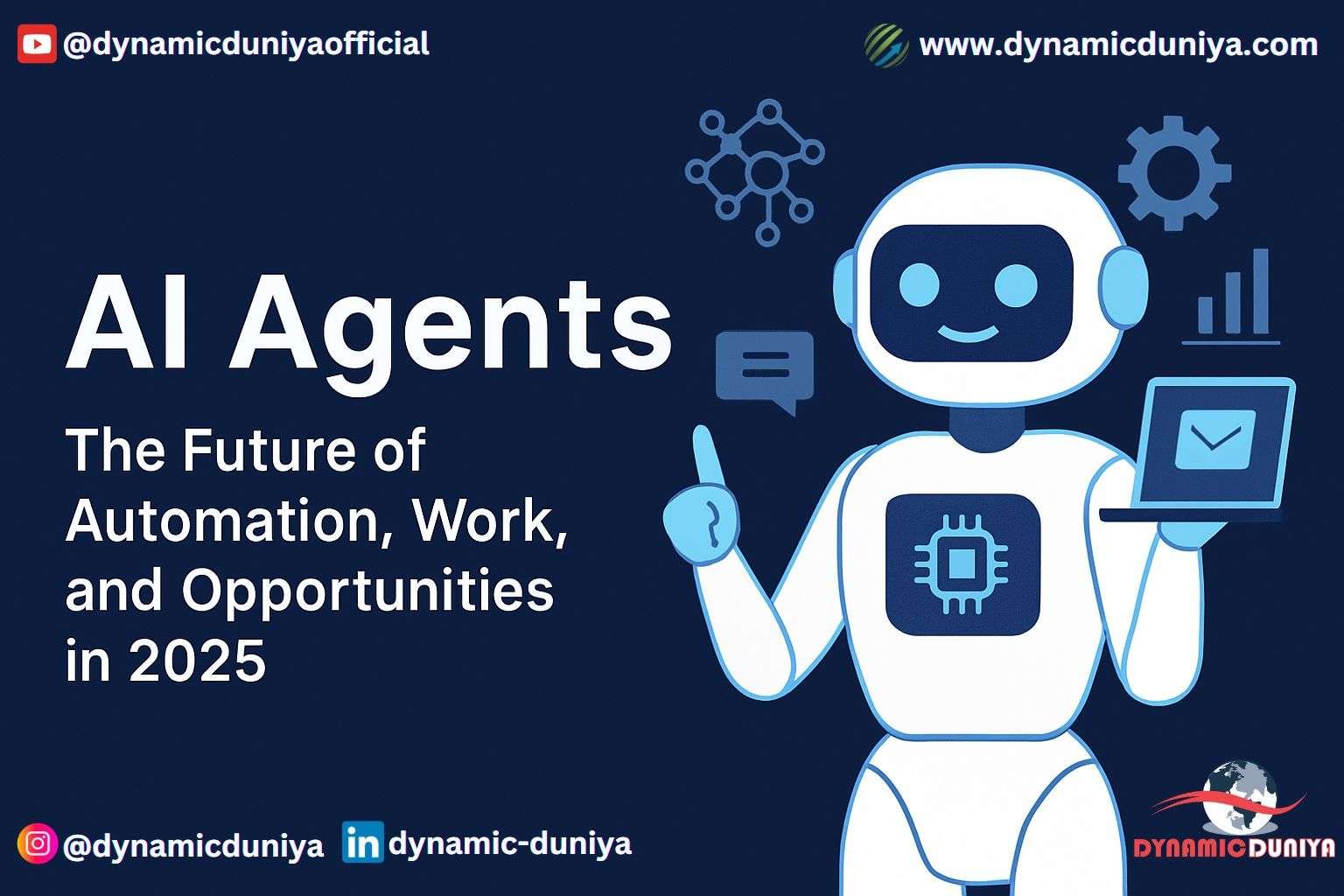The Ultimate Guide to Machine Learning (ML) for Beginners

1. Introduction to Machine Learning
Machine Learning (ML) is a subset of Artificial Intelligence (AI) that allows computers to learn from data and make decisions without explicit programming. Unlike traditional software that follows predefined rules, ML models improve their performance over time by analyzing data patterns.
Example:
- A spam filter learns to distinguish spam emails from legitimate ones by analyzing past emails and user interactions.
2. How Machine Learning Works
Machine Learning follows a structured process:
- Data Collection – Gathering relevant data (text, images, numbers, etc.).
- Data Preprocessing – Cleaning and preparing data for training.
- Feature Engineering – Selecting important variables (features) from data.
- Model Selection – Choosing an ML algorithm like Decision Trees, Neural Networks, or SVMs.
- Training the Model – Feeding the model with labeled or unlabeled data.
- Testing & Evaluation – Checking accuracy using metrics like Precision, Recall, and F1-score.
- Deployment & Monitoring – Using the model in real-world applications and improving it over time.
Example:
- A fraud detection system in banking learns from past transactions and flags suspicious ones automatically.
3. Types of Machine Learning
Machine Learning is broadly classified into three main types:
1. Supervised Learning
- The model learns from labeled data (input + correct output).
- Used for classification (e.g., spam detection) and regression (e.g., predicting house prices).
Example:
- Netflix recommends movies based on users’ past viewing history.
2. Unsupervised Learning
- The model identifies patterns in unlabeled data.
- Used for clustering (grouping similar items) and association (finding relationships).
Example:
- Google News groups similar articles using clustering techniques.
3. Reinforcement Learning (RL)
- The model learns by trial and error using rewards and penalties.
- Used in robotics, game AI, and self-driving cars.
Example:
- AlphaGo, an AI developed by DeepMind, learned to beat human Go champions using reinforcement learning.
4. Popular Machine Learning Algorithms
Different ML problems require different algorithms. Here are some of the most popular ones:
- Linear Regression – Predicts continuous values (e.g., stock prices).
- Logistic Regression – Used for binary classification (e.g., spam detection).
- Decision Trees & Random Forests – Used for classification and regression.
- Support Vector Machines (SVMs) – Works well for classification problems.
- Neural Networks – Power deep learning models like image recognition systems.
- K-Means Clustering – Groups data points into clusters.
- Principal Component Analysis (PCA) – Reduces dimensionality for large datasets.
Example:
- Facebook uses Neural Networks for face recognition in photos.
5. Real-World Applications of Machine Learning
ML is transforming industries across the globe. Some key applications include:
- Finance – Fraud detection, algorithmic trading, credit risk analysis.
- Healthcare – Disease prediction, medical image analysis, drug discovery.
- E-commerce – Product recommendations, customer sentiment analysis.
- Autonomous Vehicles – Self-driving cars using reinforcement learning.
- Gaming – AI-powered opponents in video games.
- Speech Recognition – Virtual assistants like Siri, Alexa, Google Assistant.
- Email Filtering – Spam detection in Gmail.
Example:
- Amazon uses ML-powered recommendation systems to suggest products based on user behavior.
6. Tools & Libraries for Machine Learning
To get started with ML, you need the right tools. Here are some of the most popular ones:
- Python – The most widely used ML programming language.
- Scikit-learn – Great for beginners, supports various ML algorithms.
- ensorFlow & PyTorch – Deep learning frameworks for advanced ML applications.
- Keras – High-level neural network API for building models easily.
- Pandas & NumPy – Data manipulation and numerical computation.
- Matplotlib & Seaborn – For visualizing ML results.
Example:
- OpenAI’s GPT models (like ChatGPT) are built using PyTorch and TensorFlow.
7. Career Opportunities in Machine Learning
ML is a highly in-demand skill, offering multiple career paths:
- Machine Learning Engineer – Develops ML models and deploys them.
- Data Scientist – Analyzes complex data to extract insights.
- AI Research Scientist – Works on cutting-edge ML and AI research.
- Computer Vision Engineer – Specializes in image and video analysis.
- NLP Engineer – Develops AI-driven text and speech applications.
Example:
- A Machine Learning Engineer at Tesla works on improving autopilot features in self-driving cars.
8. How to Get Started with Machine Learning?
If you’re new to ML, follow this step-by-step learning path:
- Step 1: Learn Python & Basic Math (Algebra, Probability, Statistics).
- Step 2: Get familiar with ML fundamentals (Supervised, Unsupervised Learning).
- Step 3: Start with Scikit-learn, build small ML models.
- Step 4: Learn Deep Learning using TensorFlow & PyTorch.
- Step 5: Work on real-world projects (Kaggle competitions, AI challenges).
- Step 6: Apply for internships or ML jobs.
Example:
- Start with Google’s Machine Learning Crash Course or Andrew Ng’s ML course on Coursera.
9. Future of Machine Learning
ML is constantly evolving with exciting new trends:
- AutoML – Automating ML model creation.
- Explainable AI (XAI) – Making ML models more transparent.
- Federated Learning – Decentralized ML for privacy-focused applications.
- Quantum Machine Learning – The next breakthrough in computing.
Example:
- Google’s Bard AI uses advanced ML models to generate human-like text responses.
Final Thoughts
Machine Learning is one of the most exciting and rewarding fields today. Whether you’re a beginner or looking to transition into AI, learning ML can open countless career opportunities. Start small, keep practicing, and build real-world projects to strengthen your skills.
What part of Machine Learning excites you the most? Let me know in the comments!
Random Blogs
- AI & Space Exploration – AI’s Role in Deep Space Missions and Planetary Research
- Big Data: The Future of Data-Driven Decision Making
- Store Data Into CSV File Using Python Tkinter GUI Library
- Types of Numbers in Python
- Transforming Logistics: The Power of AI in Supply Chain Management
- Extract RGB Color From a Image Using CV2
- What to Do When Your MySQL Table Grows Too Wide
- Important Mistakes to Avoid While Advertising on Facebook
- Understanding LLMs (Large Language Models): The Ultimate Guide for 2025
- Understanding AI, ML, Data Science, and More: A Beginner's Guide to Choosing Your Career Path
Prepare for Interview
- JavaScript Interview Questions for 5+ Years Experience
- JavaScript Interview Questions for 2–5 Years Experience
- JavaScript Interview Questions for 1–2 Years Experience
- JavaScript Interview Questions for 0–1 Year Experience
- JavaScript Interview Questions For Fresher
- SQL Interview Questions for 5+ Years Experience
- SQL Interview Questions for 2–5 Years Experience
- SQL Interview Questions for 1–2 Years Experience
- SQL Interview Questions for 0–1 Year Experience
- SQL Interview Questions for Freshers
- Design Patterns in Python
Datasets for Machine Learning
- Amazon Product Reviews Dataset
- Ozone Level Detection Dataset
- Bank Transaction Fraud Detection
- YouTube Trending Video Dataset (updated daily)
- Covid-19 Case Surveillance Public Use Dataset
- US Election 2020
- Forest Fires Dataset
- Mobile Robots Dataset
- Safety Helmet Detection
- All Space Missions from 1957
- OSIC Pulmonary Fibrosis Progression Dataset
- Wine Quality Dataset
- Google Audio Dataset
- Iris flower dataset
- Artificial Characters Dataset
- Bitcoin Heist Ransomware Address Dataset






